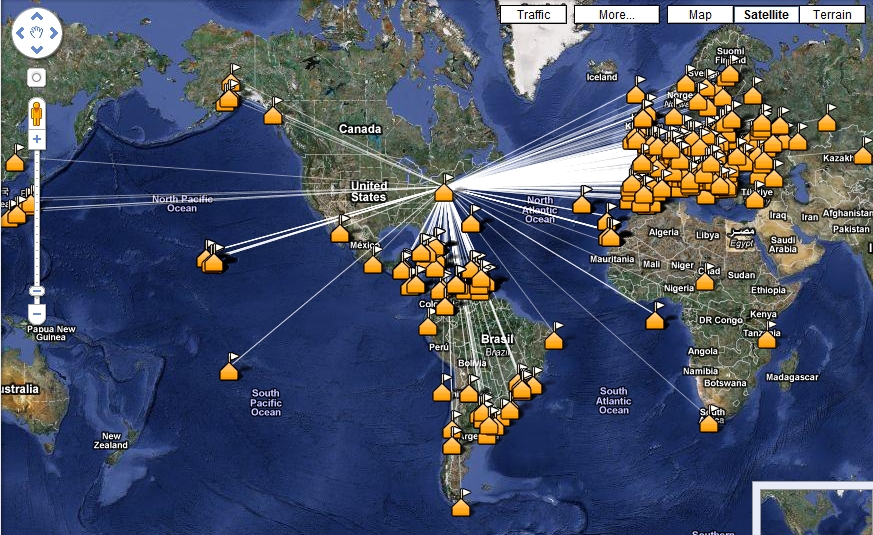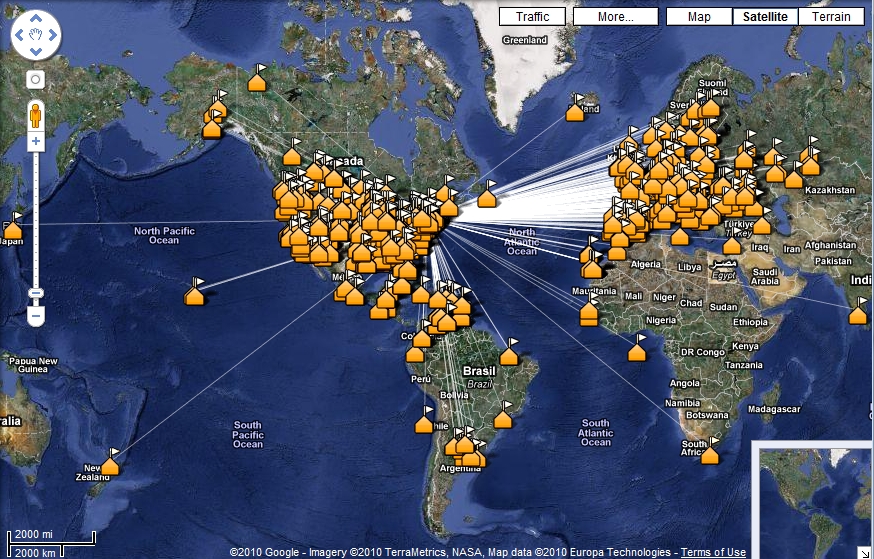Saturday was the 2010 North America RTTY QSO Party (NAQP). A single operator can be active for 10 of the 12 hours the contest runs. Operators are also limited to 100w which is all I have anyway.
The night before was a warm up and I had decided to try and use the ESM function in N1MM. That means N1MM sends certain macros based on what info is entered and where the cursor is when you press the Enter key. Prior I would press specific function keys based on what I wanted to send. It took some getting used to but trying it out in the warm up the night before was worthwhile. I also tried to use the call stacking option which if in Run mode and you notice multiple stations you can stack them vs calling CQ after each exchange. That was less intuitive and seemed to be hit or miss so I don’t think I have what I need to do worked out well. During the contest I did pretty well with the ESM feature and pressing enter. Once in a while I’d press enter and the wrong message from what I expected was sent, but that was because of the info entered or where I had the cursor. It’s just something I’ll stick with and should get more obvious as time goes on.
I was able to get on the air at the start of the contest and spend about 6.5 hours of the 10 hours working stations on 15m and 20m before moving to 40m after dark. 15m seemed to have some activity but nothing compared to the last 2 weekend contests. I don’t know if the conditions have changed or if folks just weren’t on 15m. I was able to log my first Alaska contact on 15m. When I needed to head out to dinner with my wife and friends I had 247 contacts in the log. Dinner took longer then planned and I was gone for over 2.5 hours. Dinner was good though!
After returning from dinner I ran through 40m to get any stations I hadn’t logged and then went to 80m. I then got a call from my older daughter asking me to pick her and her friends up in about 1 hour. I continued to work stations and do some CQing on 80m until I needed to head out and get my daughter and friends. It took 40 mins to pick them up and drop them all off. It left me with 1 hour of time before the contest was going to end so I finished scanning 80m and then picked a frequency and just went into run mode until about 10 mins left before seeing if there was anyone to work on 40 or 80m.
I worked for a few non North America DX stations but not too many. They all called me when I was CQing. What I did notice that was a little frustrating were stations that were calling CQ but didn’t end with a CQ or QRZ. As I was tuning up/down the band, if I hit one of those stations there was no way to tell if they were calling CQ or if they were sending their call sign to the station calling CQ. As an example (using a fictitious call sign) they would call CQ NAQP de K2XXX K2XXX . If I was tuning to the frequency I’d see something like de K2XXX K2XXX and not know if I should put my call out or not. So then I’d wait a bit and find out they were really calling CQ and I didn’t need to wait.
RTTY contesting is fun and I ended up with the following:
Band QSOs Pts Sec NA 3.5 82 82 38 0 7 95 95 36 3 14 146 146 32 1 21 21 21 14 2 Total 344 344 120 6 Score : 43,344
See you in the next contest,
K2DSL

